
Slouching Towards Utopia: An Economic History of the Twentieth Century
by
J. Bradford Delong
Published 6 Apr 2020
The legion was essential for the making of the Roman Empire, but it then reached the limits of its expansion, and eventually fell.4 What changed after 1870 was that the most advanced North Atlantic economies had invented invention. They had invented not just textile machinery and railroads, but also the industrial research lab and the forms of bureaucracy that gave rise to the large corporation. Thereafter, what was invented in the industrial research labs could be deployed at national or continental scale. Perhaps most importantly, these economies discovered that there was a great deal of money to be made and satisfaction to be earned by not just inventing better ways of making old things, but inventing brand-new things.
…
So even though humanity had had market economies, or at least market sectors within its economies, for thousands of years before 1870, all that markets could do was to find customers for producers of luxuries and conveniences, and make the lives of the rich luxurious and of the middle class convenient and comfortable. Things changed starting around 1870. Then we got the institutions for organization and research and the technologies—we got full globalization, the industrial research laboratory, and the modern corporation. These were the keys. These unlocked the gate that had previously kept humanity in dire poverty. The problem of making humanity rich could now be posed to the market economy, because it now had a solution. On the other side of the gate, the trail to utopia came into view.
…
(Or as much progress as was realized every twelve years from 1500 to 1770? Or every sixty years before 1500?) And how did what was originally a geographically concentrated surge in and around parts of Europe become a global (albeit unevenly so) phenomenon? To foreshadow a more thorough discussion in Chapter 2, I think the answers lie in the coming of the industrial research laboratory, the large modern corporation, and globalization, which made the world one global market economy, all of which then proceeded to solve the problems that the economy set itself. And the biggest of those problems turned out to be finding a way to ratchet up the pace of economic growth. The lab and the corporation are what allowed the likes of Thomas Edison and Nikola Tesla to become inventors.
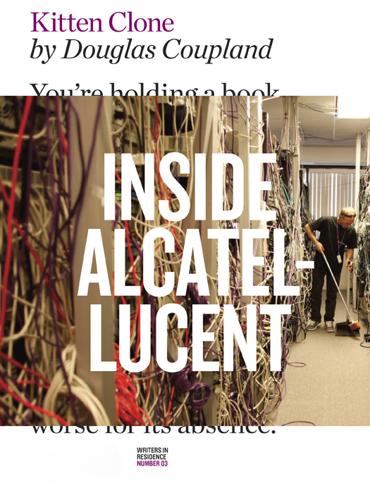
Kitten Clone: Inside Alcatel-Lucent
by
Douglas Coupland
Published 29 Sep 2014
I’ve noticed that the moment you approach the point in a conversation when you might ask scientists to make a prediction, their bodies start to clench. And when you actually ask them to predict the future, they freeze completely, then say, ‘No, I can’t do that for you.’ ” “So, Doug, do you believe in technological determinism?” “I’m unsure. Bell Labs is making me feel differently about it.” “How so?” “Well, you guys are an industrial research laboratory, right?” “Yes. And we have Bell Labs in eight locations around the planet, not just here.” “Your job has always been to do research that furthers the future of communication. First for AT&T and the North American telephone monopoly, and then for Alcatel-Lucent.” “More or less. We do defence and aerospace research, too.
…
In Mervin Kelly’s long 1947 hallways, geographic proximity enforced cross-pollination; now, that hallway is the Internet and Lufthansa, British Airways, Air Canada and Cathay Pacific, and the cross-pollination comes from interdepartmental spreadsheets specifying which Bell Labs employee is researching what. When asked about the amount of basic research done in China, Gui says, “Any project development time that might go beyond two years is iffy. We are an industrial research lab, and we can feel the breath of our competitors on our necks.” Gui’s seeming casualness about the absence of basic or fundamental research is unusual in the industry and may be a brave face put on for a nosy visitor. With so much competition, most companies are running as fast as they can just to stay in the same place, let alone go forward.
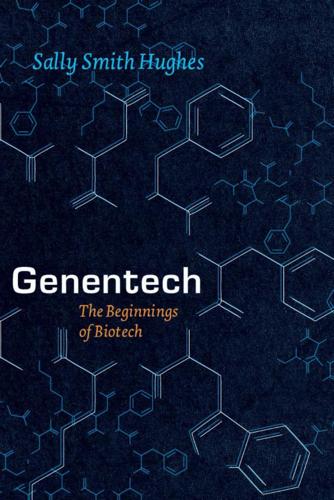
Genentech: The Beginnings of Biotech
by
Sally Smith Hughes
The Gilbert lab’s “Circulation Manager” (Forrest Fuller) asked her to remit “$4,000,000.00 or one insulin producing clone immediately.” Copies courtesy of Mary Betlach. 27Goeddel oral history, 2001/2002, 11. 28Kleid oral history, 2001/2002, 25. 29Kleid, telephone conversation with author, October 2, 2007. 30Since the early twentieth century, major American industrial research laboratories had required their scientists to assign research rights to the company. See Wise 1980. 31For a lively account of the contest for insulin at Harvard, UCSF, and Genentech, see Hall 1987. 32Tom Kiley, letter to author, February 1, 2004. 33Riggs oral history, 2005, 56. 34Riggs 1981. 35Crea oral history, 2002, 27. 36Others working on human insulin at this time included Donald Steiner at the University of Chicago, Saran Narang in Canada, and Ray Wu at Cornell.
…
London: Routledge. Pisano, Gary P. 2006. Science Business: The Promise, the Reality, and the Future of Biotech. Boston: Harvard Business School Press. Rabinow, Paul. 1996. Making PCR: A Story of Biotechnology. Chicago: University of Chicago Press. Reich, Leonard S. 1985. The Making of the American Industrial Research Laboratory: Science and Business at GE and Bell, 1876–1926. Cambridge: Cambridge University Press. Reimers, Niels. 1987. “Tiger by the Tail.” Chemtech (August): 464–71. Rifkin, Jeremy. 1977. “DNA: Have the Corporations Already Grabbed Control of New Life Forms?” Mother Jones, February–March, 23–26, 39. ———. 1998.
…
Swanson deferred to Boyer to size up twenty-six-year-old Goeddel’s scientific qualifications. Boyer immediately recommended hiring him—a remarkably wise decision, it would turn out. Kleid and Goeddel then signed employment agreements, giving Genentech title to all inventions and protecting the company from unauthorized disclosure of proprietary information, a routine practice in industrial research labs.30 GENENTECH’S HUMAN INSULIN PROJECT Late in 1977, perhaps through the somatostatin publicity, Lilly’s Irving Johnson learned of a new contender—an unprepossessing start-up with a grand plan to launch research on human insulin.31 By February 1978 Johnson and Swanson were in touch, Swanson pressing hard for a research and development contract with the venerable drug firm.
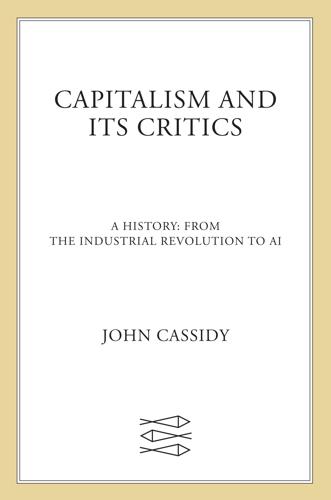
Capitalism and Its Critics: A History: From the Industrial Revolution to AI
by
John Cassidy
Published 12 May 2025
“What changed after 1870 was that the most advanced North Atlantic economies had invented invention,” DeLong wrote in his 2022 book Slouching Towards Utopia, a sweeping economic history of the modern world. “They had invented not just textile machinery and railroads, but also the industrial research lab and the forms of bureaucracy that gave rise to the large corporation. Thereafter, what was invented in the industrial research labs could be deployed at national or continental scale.”4 DeLong wasn’t mounting a defense of the trusts and their monopolization. His emphasis was on corporations operating in competitive markets that invested in science and product development as competitive weapons.
…
In 1872 Andrew Carnegie began building his first steel mill, in Braddock, Pennsylvania. In 1876, Alexander Graham Bell, a Scottish-Canadian scientist who taught at Boston University, patented the telephone; the following year he created the Bell Telephone Company, which would later become AT&T. In 1876, Thomas Edison opened an industrial research laboratory in Menlo Park, New Jersey, using the proceeds from the sale of his quadruplex telegraph. During the Civil War, Congress had passed legislation that created a national currency and a system of nationally chartered banks. National City Bank of New York, the precursor to Citibank, received a charter in 1865.
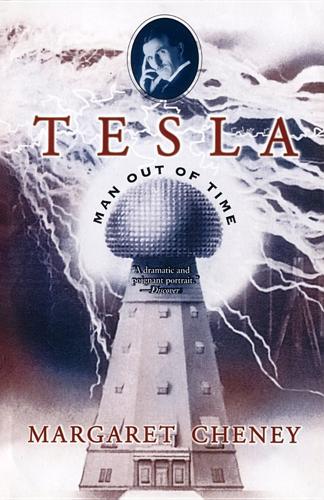
Tesla: Man Out of Time
by
Margaret Cheney
Published 1 Jan 1981
Edison later told him about another important European scientist’s arrival in the United States. Charles Proteus Steinmetz, the brilliant German dwarf, was almost deported as an indigent alien. He somehow squeaked through and went on to become the resident genius of General Electric’s first industrial research laboratory at Schenectady. He would later strive to develop an acceptable alternative to Tesla’s alternating-current system when Edison and General Electric needed to play catch-up. Tesla’s skills were quickly appreciated by Edison, who gave him almost complete freedom in working on the design and operating problems of the shop.
…
Indeed, when he first arrived in America there was none; institutional ties with the big three of industry, government, and universities had not yet become the accepted avenue to recognition for a scientist. But now that was changing. He was a loner by preference when the time for lone operators was swiftly passing. Edison himself, as one of the last of the “independents,” was a transitional figure who built the first of the large industrial research laboratories, setting the style for modern science. Tesla’s lifelong distaste for corporate involvement was twofold: most other engineers drove him mad with impatience, and he resented any form of control. If he had to deal with a corporate person, he preferred it to be the president or chairman of the board.
…
He believed that all matter came from a primary substance, the luminiferous ether, which filled all space, and he stoutly maintained that cosmic rays and radio waves sometimes moved more swiftly than light. The younger scientists, most of whom were affiliated with universities, were just beginning to perceive what a garden of earthly delights government-sponsored research could be. Oddly enough it was to be Edison, creator of the modern industrial research laboratory, who threw a spanner into their dreams. His first utterance as head of the Naval Consulting Board was that he did not think “scientific research would be necessary to any great extent.” After all, he said, the Navy already had access to a vast “ocean of facts” in the Bureau of Standards.
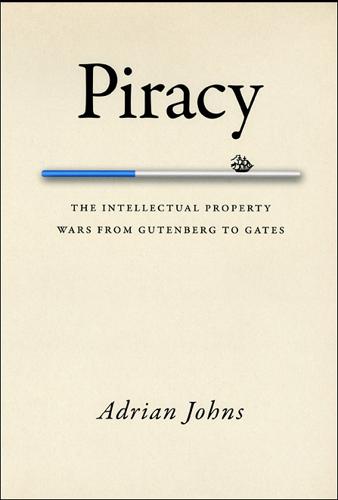
Piracy : The Intellectual Property Wars from Gutenberg to Gates
by
Adrian Johns
Published 5 Jan 2010
The more people were encouraged to experiment, the more likely it was that the crucial discoverer would turn up. This was to Swinton a matter of national survival. “In our modern electrical civilization,” he warned, “our commercial survival depends upon the attention given to electrical subjects.” The big new U.S. industrial research laboratories could swamp any British rivals in their field. The only way to compete with them was to do something different – and the way to do that was to take advantage of the putatively British virtue of individuality. The stereotype of the British eccentric suggested a real strategy to set against the spirit of teamwork manifested in American industrial research.
…
“Racketeers are running sores on the social body,” Bain pronounced, “but unsocialized scientists are a foul corruption in the very heart’s blood of society.” The “pure” scientist was “a moral eunuch.” In fact, the ivory tower was something of a myth. University research was a far smaller affair in the 1920s–1930s than it was later to become. What there was of it was in any case tempted to follow the lead of the industrial research laboratories. The conviction that science and property were antithetical, too, was far from universal. In 1923 the League of Nations seriously proposed instituting a property right in scientific discoveries, arguing that this would attract a new generation of young citizens into the sciences to replace that lost in the trenches.

Vassal State
by
Angus Hanton
Published 25 Mar 2024
‘There’s a better way to do it – find it’ – Thomas Edison With 1,093 patents to his name, including for the light bulb, recorded sound, radio and motion pictures, Thomas Edison is considered to be the most significant inventor and industrialist of all time. One estimate suggests that his inventions are still responsible for $8–12 trillion of global productivity today, and one reason is that his most critical invention was the modern industrial research laboratory.12 Edison created ‘R & D’ and, with it, an R & D culture in America funded by public and private capital. Today, US innovators are surrounded by a supportive environment that can offer hard cash. Investment comes from venture capitalists as well as the US government: the National Institutes of Health (NIH) alone award annual grants of $45 billion towards R & D.13 Innovation through US defence spending has led to inventions that have both transformed modern life and powered the US multinationals.
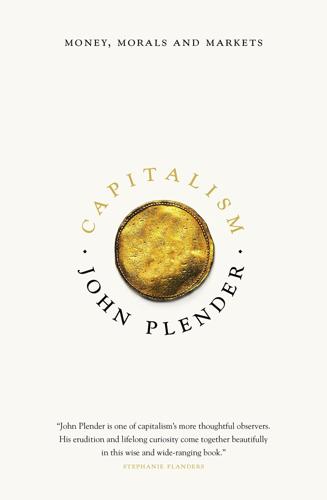
Capitalism: Money, Morals and Markets
by
John Plender
Published 27 Jul 2015
This setback was remedied by others at a later date. Part of the key to his success was that he was one of the first to see the potential for applying mass production techniques and teamwork to the process of invention. His laboratory at Menlo Park in New Jersey is generally reckoned to have been the first industrial research laboratory. Others made a substantial contribution to his innovations, which he acknowledged, saying, ‘I am quite correctly described as more of a sponge than an inventor.’ This probably overstates the case, but it contains a large grain of truth. Edison’s ability to translate such inventiveness into business success is surely unparalleled.

What Algorithms Want: Imagination in the Age of Computing
by
Ed Finn
Published 10 Mar 2017
In later chapters we will examine more closely the “false personalization” that Tarleton Gillespie cautions against, extending Internet activist and author Eli Pariser’s argument in The Filter Bubble, as well as media theorist Alexander Galloway’s elegant framing of the political consequences of protocol.77 But Turner’s From Counterculture to Cyberculture offers a compelling view of how countercultural impulses were woven into the fabric of computational culture from the beginning. The figure of the hacker draws its lineage in part from the freewheeling discourse of the industrial research labs of the 1940s; the facilities that first created the opportunities for young people to not only work but play with computers.78 But, as Galloway has argued, the cybernetic paradigm has recast the playful magic of computation in a new light. With the growing significance of immaterial labor, and the concomitant increase in cultivation and exploitation of play—creativity, innovation, the new, the singular, flexibility, the supplement—as a productive force, play will become more and more linked to broad social structures of control.
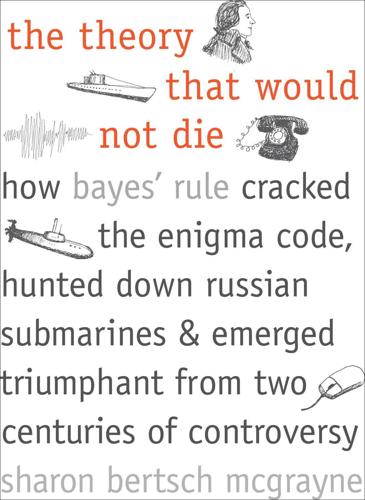
The Theory That Would Not Die: How Bayes' Rule Cracked the Enigma Code, Hunted Down Russian Submarines, and Emerged Triumphant From Two Centuries of Controversy
by
Sharon Bertsch McGrayne
Published 16 May 2011
But he was a man of staggering accomplishments in the cloak-and-dagger world of military research, especially in code breaking and high-tech weaponry. He worked two jobs 30 miles apart: at Princeton University, where he was a professor of statistics, and at AT&T’s Bell Laboratories, then widely considered the finest industrial research laboratory in the world. From these vantage points, he advised five successive U.S. presidents, the National Security Agency, and the Central Intelligence Agency. To appreciate the audacity of NBC’s job offer to Tukey, one needs to understand how deeply he was embedded in Cold War secrets. He had done research on topology in the late 1930s and military analysis in the 1940s.

From Airline Reservations to Sonic the Hedgehog: A History of the Software Industry
by
Martin Campbell-Kelly
Published 15 Jan 2003
Software companies typically spend 10–15 percent of the revenues on R&D, well above the percentage in most other industries. Proportionately, the R&D spending of software companies is comparable to that of the pharmaceutical industry; however, R&D plays markedly different roles in these two industries. In the pharmaceutical industry, much of the R&D takes place in university and industrial research laboratories, and field trials are directed by PhD-qualified scientists. In the software industry, most of the R&D is done by youthful programmers, usually not trained past the bachelor’s degree level, who crank out code in an intuitive but effective fashion—R&D with a small r and a large D. One of the policy levers used by governments is the sponsorship of basic software research that would be too long term, too expensive, or too risky for the individual firm.
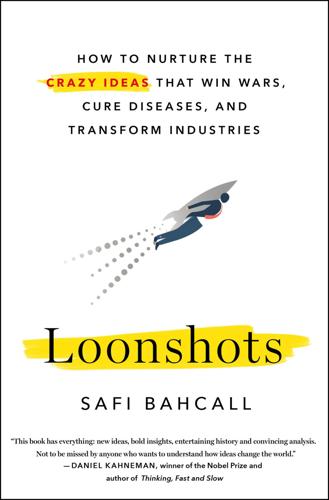
Loonshots: How to Nurture the Crazy Ideas That Win Wars, Cure Diseases, and Transform Industries
by
Safi Bahcall
Published 19 Mar 2019
Over the next 50 years, Vail’s organization—eventually called the Bell Telephone Laboratories—produced the transistor, the solar cell, the CCD chip (used inside every digital camera), the first continuously operating laser, the Unix operating system, the C programming language, and eight Nobel Prizes. Vail created the most successful industrial research lab in history, and AT&T grew into the country’s largest business. Vail’s protégé and the president of Bell Labs, Frank Jewett, would first meet Bush when they both worked on submarine detection for the Navy during World War I. Over the subsequent three decades, Jewett became a close friend and mentor to Bush.

The Job: The Future of Work in the Modern Era
by
Ellen Ruppel Shell
Published 22 Oct 2018
“the spectacular yield you might think we’d get” Scott Shane, “Why Encouraging More People to Become Entrepreneurs Is Bad Public Policy,” Small Business Economics 33, no. 2 (2009): 141–49, http://dx.doi.org/doi:10.1007/s11187-009-9215-5. to meet the immediate demands Moshe Y. Vardi, “The Rise and Fall of Industrial Research Labs,” Communications of the ACM 58, no. 1 (2014): 5, http://dx.doi.org/doi:10.1145/2687353. Also, economists Ashish Arora, Sharon Belenzon, and Andrea Patacconi report that the share of publicly traded corporations whose scientists publish in academic journals was just 6 percent in 2007, down nearly two-thirds from 1980.

Computer: A History of the Information Machine
by
Martin Campbell-Kelly
and
Nathan Ensmenger
Published 29 Jul 2013
In the period 1935–1945, just as there was a boom in human-computing organizations, there was at the same time a boom in the invention of one-of-a-kind digital computing machines. There were at least ten such machines constructed during this period, not only by government organizations but also by industrial research laboratories such as those of AT&T and RCA, as well as the technical departments of office-machine companies such as Remington Rand, NCR, and IBM. Machines were built in Europe, too—in England and Germany. These machines were typically used for table making, ballistics calculations, and code-breaking.

An Empire of Wealth: Rise of American Economy Power 1607-2000
by
John Steele Gordon
Published 12 Oct 2009
Every schoolchild knows that Edison invented, or made substantial contributions to, the phonograph, the stock ticker, the telephone (along with important mechanical improvements to Bell’s original machine, Edison also coined the word hello), movies, and, of course, electric light. But two of Edison’s greatest inventions are seldom mentioned because, by their nature, they couldn’t be patented. One was perhaps his greatest invention of all, the industrial research laboratory. Edison established his own laboratory in Menlo Park, New Jersey, in 1876, and it was there that he created the phonograph (1877), the electric light (1879), and hundreds of other inventions. It was, in essence, an invention factory where engineers, chemists, and mechanics turned new technological possibilities into practical—and, most important, commercially viable—products.
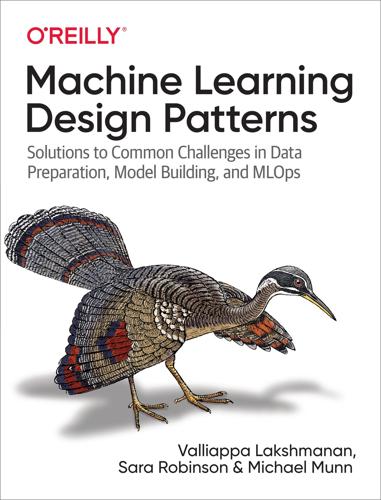
Machine Learning Design Patterns: Solutions to Common Challenges in Data Preparation, Model Building, and MLOps
by
Valliappa Lakshmanan
,
Sara Robinson
and
Michael Munn
Published 31 Oct 2020
If you are a computer science student headed for a job in industry, this book will round out your knowledge and prepare you for the professional world. It will help you learn how to build high-quality ML systems. What’s Not in the Book This is a book that is primarily for ML engineers in the enterprise, not ML scientists in academia or industry research labs. We purposefully do not discuss areas of active research—you will find very little here, for example, on machine learning model architecture (bidirectional encoders, or the attention mechanism, or short-circuit layers, for example) because we assume that you will be using a pre-built model architecture (such as ResNet-50 or GRUCell), not writing your own image classification or recurrent neural network.
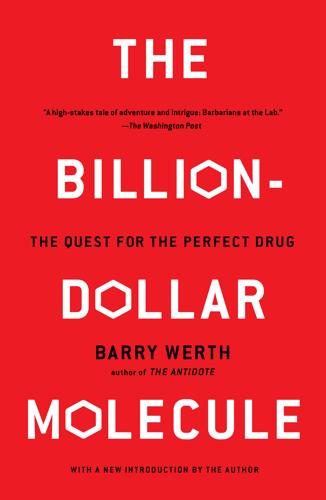
The Billion-Dollar Molecule
by
Barry Werth
Three years later he opened his first steel plant. In 1901, twenty-six years later, he sold Carnegie Steel to J.P. Morgan, allowing Morgan to create U.S. Steel and making Carnegie the world’s richest man. Thomas Edison moved to Menlo Park, New Jersey, in 1876, establishing his first full-scale industrial research laboratory, combining electrical and chemical labs with an experimental machine shop. He was twenty-nine. Three years later he invented the carbon-filament lamp, then three years after that opened new offices in lower Manhattan and started construction of the first permanent electrical power station.
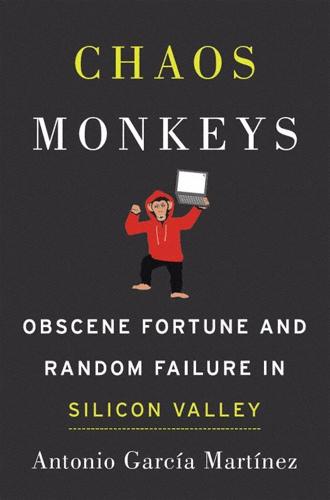
Chaos Monkeys: Obscene Fortune and Random Failure in Silicon Valley
by
Antonio Garcia Martinez
Published 27 Jun 2016
—Numbers 13:2 WEDNESDAY, MARCH 30, 2011 The entrance to Facebook headquarters had the word HACK written across the sliding double doors, like a tympanum frieze on a cathedral, but instead of Christ in judgment or the Last Supper, it was an injunction to craft and build. The building itself was a generic commercial space, indistinguishable from all the other large warehouse/office spaces that dotted South Bay and were collectively referred to as “Silicon Valley.” If you saw a picture, you’d think it was the industrial research lab for some fiber-optics or satellite company, and not the social media company that had managed to globally intermediate Homo sapiens’ insatiable urge to connect and share. Once you were past HACK, a flat-panel screen to your right displayed a real-time animation of Facebook friending activity around the globe.

There Is Nothing for You Here: Finding Opportunity in the Twenty-First Century
by
Fiona Hill
Published 4 Oct 2021
The Russian economy and its population went into survival mode. Russian enterprises bartered among themselves for supplies to keep production going. Former factory workers found themselves selling black-market cigarettes or household goods on the street. They were joined by factory accountants, as well as scientists and doctors from industrial research labs and health clinics. Friends’ fathers and mothers lost their jobs (most women in Russia worked in the Soviet period). The parallels with the North East of England were even more striking than before—and for many of the same reasons. Both the North East and post-Soviet Russia were on the losing end of 1980s free-market economic reform policies.

Architects of Intelligence
by
Martin Ford
Published 16 Nov 2018
I then went to work for the World Health Organization for a year, doing statistical software for HIV and AIDS surveillance and forecasting. After that, I went to graduate school at the University of Washington, where I got a PhD in Computer Science, doing mostly compiler optimization work. I went on to work for DEC in Palo Alto in their industrial research lab, before joining a startup—I lived in Silicon Valley, and that was the thing to do! Eventually, I ended up at Google back when it only employed around 25 people, and I’ve been here ever since. I’ve worked on a number of things at Google. The first thing I did here was working on our first advertising system.

The Code: Silicon Valley and the Remaking of America
by
Margaret O'Mara
Published 8 Jul 2019
When talented engineers job-hopped, aided by those California non-compete laws, technology often came with them. It was “a structure that allows a hundred flowers to bloom,” as Intel’s Andy Grove put it: entrepreneurs leaving bigger firms to start their own companies. But start-ups didn’t have the bandwidth to do next-generation research. The region’s de facto industrial research lab had federally funded operations at Lockheed and NASA Ames and Stanford and SRI—and the government wasn’t making the kind of research investments it used to.11 In contrast, deep-pocketed, diversified companies like IBM, RCA, and Texas Instruments had the cash to pour into research and into new plants.
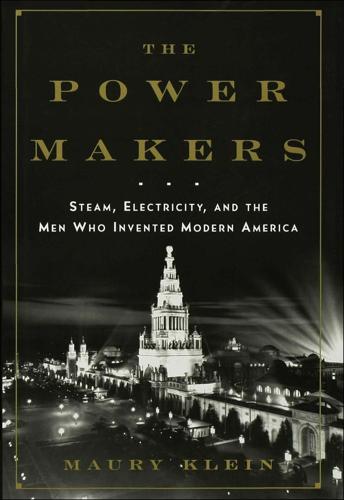
The Power Makers
by
Maury Klein
Published 26 May 2008
Coffin stayed on as chairman until 1922 and lived until 1926. He and Rice gave way to the next generation of outstanding GE leaders, Owen D. Young and Gerard Swope.28 Elihu Thomson continued his dual role as scholar and research scientist for General Electric until 1900, when the company finally established its industrial research laboratory. At that moment he terminated his career as an inventor without a murmur of regret. During the 1890s Thomson did extensive research and development work on X-rays, automobiles, and incandescent lamps, but he grew weary of product development. “My ambition,” he admitted in 1897, “has been to be able to devote more and more of my time to scientific work.”

Coders at Work
by
Peter Seibel
Published 22 Jun 2009
Someone once told me a PhD is really a vocational degree—if you want to be a professor, you've got to get one but if you don't want to be a professor, there's no point. Do you think that analysis applies to computer science? Peyton Jones: That part is certainly true. It's necessary but not sufficient if you want to stick with research as a career—either academic or at somewhere like Microsoft Research or Google's research labs—a serious industrial research lab. You really need a PhD to get past the starting post. If you don't want to pursue a career in research, then I think it becomes a follow-your-heart kind of thing. You're five times as productive if you're working on something that makes you enthusiastic. So if you find yourself thinking, “I just love this and I'd just like to have some time to dig into it some more,” a PhD is a fantastic opportunity to spend three years in Britain, or rather longer in the States, just studying something.
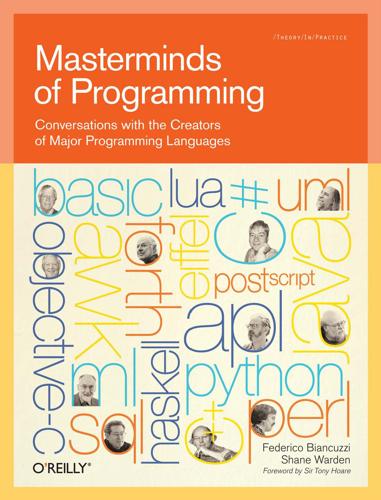
Masterminds of Programming: Conversations With the Creators of Major Programming Languages
by
Federico Biancuzzi
and
Shane Warden
Published 21 Mar 2009
His name was J. C. R. Licklider and he had been hanging around the research labs at MIT where they had started to do research on using computing technology, not to calculate but to communicate. What he saw was that the researchers at MIT had built up a set of relationships with other academic and a few industrial research labs around the country and he went to visit all of them, found them to be exceptionally bright people. They were at places like Caltech, UCLA, Stanford, Berkley, Utah, Michigan, and, of course, a bunch of East Coast places like MIT, Carnegie Tech, and a few others. He decided to take a few tens of millions of dollars and distribute it in small packages to about a dozen of these universities and a couple of research labs like Bolt Beranek and Newman, and the RAND Corporation.

Data Mining: Concepts and Techniques: Concepts and Techniques
by
Jiawei Han
,
Micheline Kamber
and
Jian Pei
Published 21 Jun 2011
Moreover, we would like to thank U.S. National Science Foundation, NASA, U.S. Air Force Office of Scientific Research, U.S. Army Research Laboratory, and Natural Science and Engineering Research Council of Canada (NSERC), as well as IBM Research, Microsoft Research, Google, Yahoo! Research, Boeing, HP Labs, and other industry research labs for their support of our research in the form of research grants, contracts, and gifts. Such research support deepens our understanding of the subjects discussed in this book. Finally, we thank our families for their wholehearted support throughout this project. Second Edition of the Book We would like to express our grateful thanks to all of the previous and current members of the Data Mining Group at UIUC, the faculty and students in the Data and Information Systems (DAIS) Laboratory in the Department of Computer Science at the University of Illinois at Urbana-Champaign, and many friends and colleagues, whose constant support and encouragement have made our work on this edition a rewarding experience.
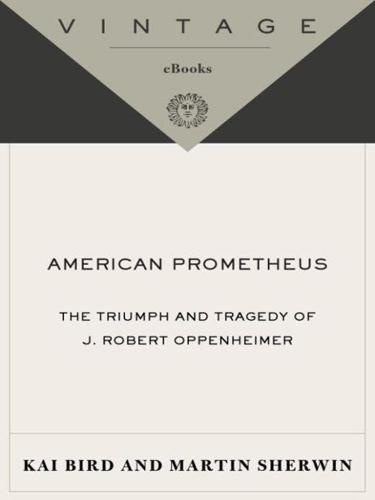
American Prometheus: The Triumph and Tragedy of J. Robert Oppenheimer
by
Kai Bird
and
Martin J. Sherwin
Published 18 Dec 2007
The trial thus represented a watershed in the relations of the scientist to the government. The narrowest vision of how American scientists should serve their country had triumphed. For several decades, American scientists had been leaving the academy in droves for corporate jobs in industrial research laboratories. In 1890, America had only four such labs; by 1930 there were over a thousand. And World War II had only accelerated this trend. At Los Alamos, of course, Oppenheimer had been central to the process. But afterwards, he had taken an alternative course. In Princeton, he was not part of any weapons laboratory.

Artificial Intelligence: A Modern Approach
by
Stuart Russell
and
Peter Norvig
Published 14 Jul 2019
Having a diversity of engineers from different backgrounds makes it easier for them to notice problems in the data or models. A study by the AI Now Institute (West et al., 2019) found that only 18% of authors at leading AI conferences and 20% of AI professors are women. Black AI workers are at less than 4%. Rates at industry research labs are similar. Diversity could be increased by programs earlier in the pipeline—in college or high school—and by greater awareness at the professional level. Joy Buolamwini founded the Algorithmic Justice League to raise awareness of this issue and develop practices for accountability. A second idea is to de-bias the data (Zemel et al., 2013).